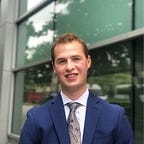The ‘Family’ History Behind a Groundbreaking Discovery in Cryptography
In a recent revolutionary paper, in the field of computer science and cryptography, researchers proved the existence of a type of encryption called indistinguishability obfuscation (iO for short).
What is iO? “It really is kind of the crown jewel” of cryptographic protocols, Rafael Pass, Professor of Computer Science at Cornell University, told reporters at Quanta Magazine.
iO makes two types of encryption possible: deniable encryption and functional encryption. The former allows one to send an encrypted message in such a way that it is impossible for anyone who intercepts the message to prove that it has been encrypted. The latter, functional encryption, allows cryptographic systems to provide different levels of access to sensitive data to different users on the system.
Behind the paper are three researchers. Aayush Jain, a 5th Year PhD student of computer science at UCLA, Huijia Lin, a Professor of Computer Science at The University of Washington, and Amit Sahai, a Professor of Computer Science at UCLA (and Jain’s Doctoral Advisor).
As is often the case with momentous leaps in scientific progress, we tend to see the minds behind them as singular and idiosyncratic. But this oversimplifies the history of science, and it can be instructive to understand the intellectual roots researchers share.
Some of histories greatest minds were once the mentees of the previous generation’s greatest minds. See Leonhard Euler and Joseph-Louis Lagrange, David Hilbert and John von Neumann, and Max Planck and Gustav Hertz.
“If I have seen further than others, it is by standing on the shoulders of giants.” — Isaac Newton
We can learn much about both the history of science and the mechanics of scientific progress by studying the people — and their relationships— behind some of history’s greatest discoveries. This, in part, serves as the motivation for academic genealogy projects. These projects, which are usually confined to fields of study, track scholarly mentorship relationships (dissertation supervision) to create a family tree of a scientific discipline and its scientists. Some notable examples include: The Academic Family Tree, The Mathematics Genealogy Project, and The Chemical Genealogy Database.
Using the three researchers behind the recent iO paper we can get a glimpse into scientific progress and some of the greatest minds in computer science.
Using the Mathematics Genealogy Project we can trace back the intellectual pedigree of our three researchers. The most obvious connection is the first degree mentor-mentee relationship between author Jain and his advisor Sahai.
However, going further back we see all three researchers share a recent common (academic) ancestor.
We see that the three researchers most recent common ancestor is Manuel Blum (b. 1938). Manuel Blum is a computer scientist who received his doctorate from MIT and was a professor at the University of California, Berkeley and Carnegie Mellon University. Blum also received the Turing Award in in 1995. The Turing Award is generally regarded as the highest honor in the field of computer science.
It is surprising that we are able to draw such a close connection between our three researchers — and through such a prominent computer scientist no less. Importantly, the researchers themselves are likely not aware if this connection themselves, nor was it a likely motivator for their collaboration, which is what makes the connection so interesting.
Further back our three researchers are all distant descendants of Friedrich Leibniz — a moral philosopher and (biological) father of Gottfried Leibniz, the famous polymath and inventor of calculus. We can continue going back further in time, as far as our records permit, until we reach Gregory Chioniadis (1240–1320), a Byzantine Greek astronomer who traveled widely throughout Persia.
Of course we must be careful to generalize what we have found with our three researchers here, and almost all researchers would be able to find at least one famous researcher somewhere in their (academic) family tree, but there are still lessons to be learned. Firstly, we get a more accurate picture of how science is done, and hopefully start to dispel of the ‘Great Man’ theory of history and science. Additionally, we can better understand the degree to which mentor/mentee relationships influence the problems researchers work on, even long after those relationships have formally ended.
The close connections between prominent researchers suggests the importance of fostering these connections, both formally and informally, within institutions of higher learning. Academic genealogy projects have shown these relationships to be important in the cultivation of new scientists, and it is important that people of all background have the opportunity to forge such connections throughout their undergraduate and graduate educations.
